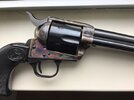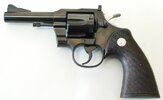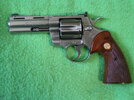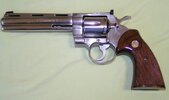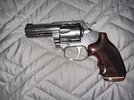Colt revolvers have a fundamental issue: timing. The Colt revolver mechanism locks up as the hammer falls. The S&W cylinder locks up when the hammer is cocked. If you quickly cock a Colt, the momentum of the cylinder will rotate the cylinder into battery, but the mechanism is more sensitive to wear than a Smith.
Recently I have read articles poopooing on older Colt Pythons. How times have changed, I have kept a couple of older in print articles where the Colt Python was glorified as best ever, and best that will ever be. Now the old Colts are unreliable and inaccurate. Of course the new Colt Pythons, they are the best ever and best that will ever be. Such is advertising.
The recent article on Colt Pythons claimed the older mechanisms will get out of time within 5000 rounds. That may be if the shooter is firing full house magnums. I don't know how much longer it can go with 38 Special target loads. I did have a few seconds asking a ten times PPC National Champ about Colts. He claimed he met only one man who used a Colt in PPC Competition, and it is probable, if that man was not his own gunsmith, that Colt was not used long. It was all due to the Colt's propensity to shoot out of time.
I am very sure that Colt will not work on old Pythons, without a doubt they sold all their part inventory during one bankruptcy or another. And, the gunsmith has to understand how a Colt mechanism works, and how to fit a part. Where are you going to find one of those gunsmiths? I suspect they are about as common as watchmakers who can fix and clean mechanical watch movements. I remember when there were lots of watchmakers, then they got old, and now finding one in your state is hard.
I have a Colt Trooper MKIII, the star ratchet has movement, and I have tried tightening it with a punch, but that has not held. I am worried about hitting the thing too hard because that might break something. Still the pistol is accurate and it does go bang. It does not shoot to point of aim with full power 158 grain bullets, it shoots too high. I cannot find a drop in taller front sight. Issues like this are common with half century out of production firearms. Parts were common about 50 years ago, and there were gunsmiths familiar with the things. But now, they are a speciality item.
Even Ruger pistols have their issues. I wanted parts for my Ruger MKII, Volquartsen is no longer making MKII parts. Ruger, they have limited parts in stock. Won't be long before Ruger is out of parts.
Only buy an old Colt if you want an old Colt and you don't plan to shoot thousands of rounds through the thing. Understand, the things are at the point where they are logistically unsustainable.




